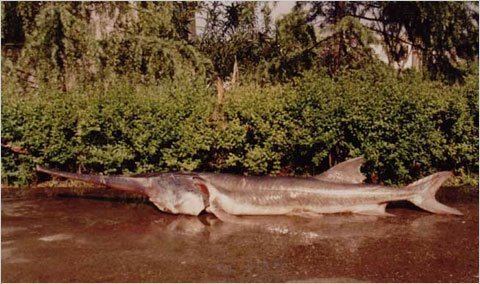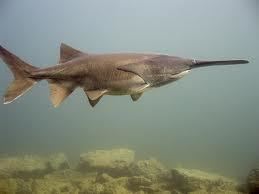Scientific name Psephurus gladius Higher classification Psephurus | ||
 | ||
Genus Psephurus Günther, 1873 Similar | ||
Endangered animals the chinese paddlefish
Chinese paddlefish (Psephurus gladius; simplified Chinese: 白鲟; traditional Chinese: 白鱘; pinyin: báixún), also known as Chinese swordfish, are among the largest freshwater fish, although the Species+ is anadromous. It is one of two extant species in the paddlefish family (Polyodontidae), the other being the American paddlefish (Polyodon spathula). The Chinese paddlefish is critically endangered and has not been seen for years, leading to fears that it already may be Extinct.
Contents
- Endangered animals the chinese paddlefish
- Juvenile chinese paddlefish
- Name
- Range and habitat
- Appearance
- Status
- References

Juvenile chinese paddlefish
Name
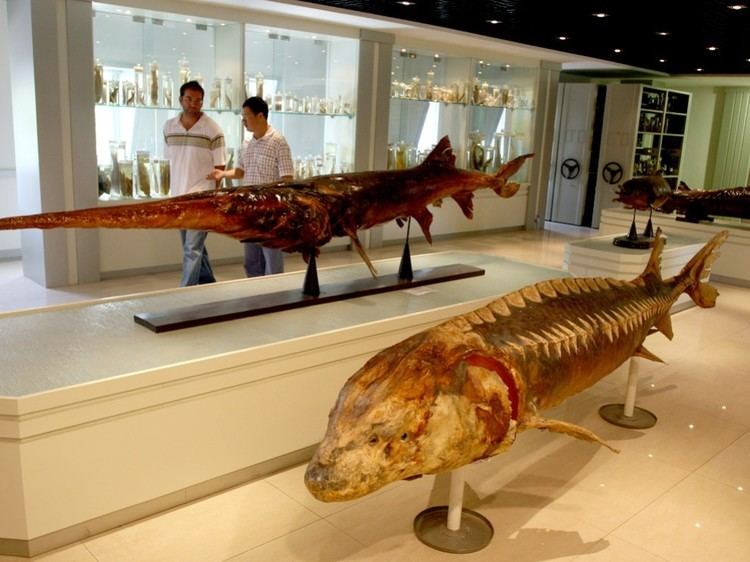
In Chiness this paddlefish is also called "elephant fish" (象魚; xiàngyú) because its snout vaguely resembles an elephant trunk. It is recorded sometimes in Classical Chinese as wěi-fish (鮪). More poetically, it is sometimes referred to as the "giant panda of the Rivers", not because of any physical resemblance to a giant panda, but because of its rarity and protected status. The origin of its Binomial name comes from the Greek words pseph (pebble) and phoreus (bearer of), which when combined, also shares the meaning of the Greek word psepharos (gloomy/cloudy one).
Range and habitat
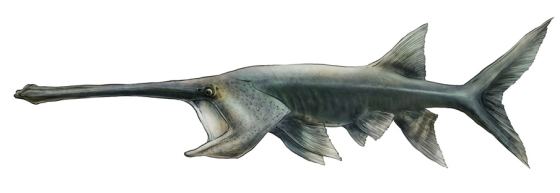
Chinese paddlefish spend part of their life in the lower section of the Yangtze (Chang Jiang), including the brackish water of its estuary, but migrate up the river and its major tributaries to spawn, which occur from March and April. It generally stays in large rivers, but sometimes occur in large lakes.
Appearance
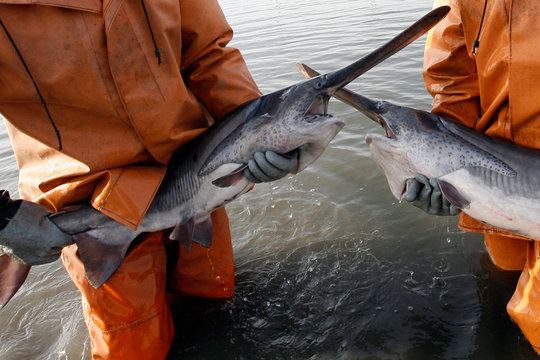
Its belly is white and back and head grey. Paddlefish are sexually mature at age seven or eight, with a typical body length of 2 m (6 ft 7 in) and a weight of 25 kg (55 lb).

It has been claimed that the Chinese paddlefish can reach 7 m (23 ft) in length and 500 kg (1,100 lb) in weight, but such reports are considered doubtful and little research on a maximum size can be conducted today due to the species' scarcity. A more generally accepted maximum size is 300 kg (660 lb) in weight and 3 m (10 ft) in length, although the specimen caught in 2007 was 3.6 m (12 ft) long. Zoologist Bǐng Zhì (秉志) is said to have recorded a 7-metre paddlefish caught by fishermen around the 1950s, although the authenticity of this story is unconfirmed.
Status

The Chinese paddlefish is a first-level protected animal of the People's Republic of China. Due to overfishing, the Chinese paddlefish is critically endangered, and officially recognized by the People's Republic in 1983 to prevent fishing of paddlefish young or adults. Paddlefish are also threatened by dams (such as the Three Gorges Dam) which divide the population into isolated groups. The fish are rarely seen, recently raising concerns that the species might already be extinct. During a three-year search conducted from 2006–2008 a research team from the Chinese Academy of Fisheries Science in Jingzhou failed to catch any paddlefish, but two probable specimens were recorded with hydroacoustic signals. In recent years there have only been two confirmed sighting of the fish alive: One occurred on January 24, 2003, on the Yangtze. The second and most recent was a 3.6-metre (12 ft), 250-kilogram (550 lb) specimen captured by illegal fishing on January 8, 2007, in Jiayu County. Local villagers contacted officials who rushed to the site. Zeb Hogan of the TV-series Monster Fish on National Geographic Channel and other conservationists transferred the fish to a holding pen in hope that it would survive, but it died shortly afterwards due to unrecoverable injuries sustained while thrashing in the net. Many scientists now consider the Chinese paddlefish to be extinct.
